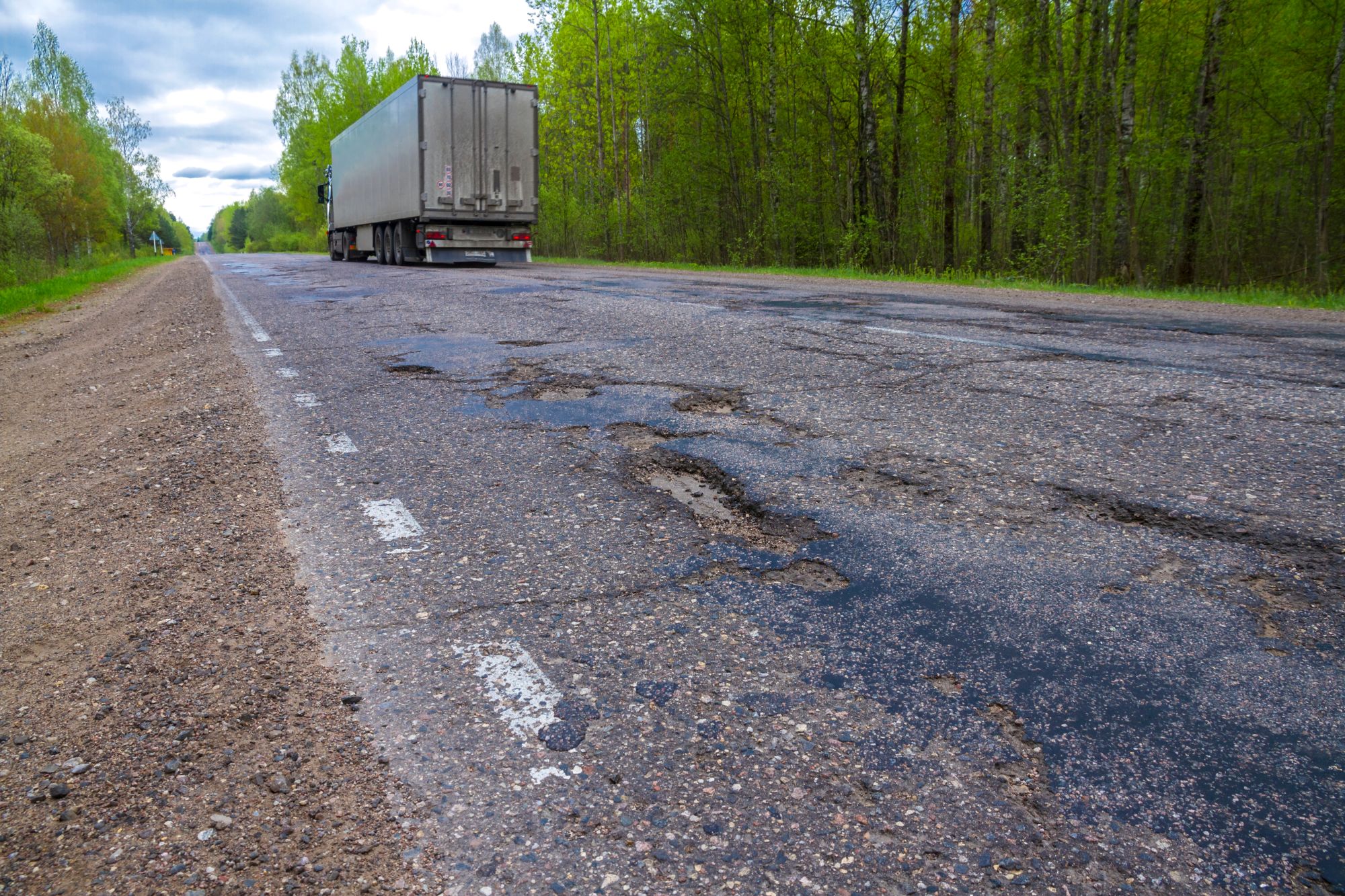
Guest
Comment le financement des infrastructures au Royaume-Uni pourrait avoir un impact sur l'industrie de la mobilité
Créée: 02/07/2025
•
Mise à jour : 03/07/2025
Après des années d'investissements inégaux et de congestion croissante, le gouvernement britannique s'est engagé à investir plus de 700 milliards de livres sterling dans les infrastructures au cours de la prochaine décennie, dont une grande partie est destinée aux routes du pays. Qu'il s'agisse de nouveaux corridors de fret ou de systèmes de circulation numériques de pointe, l'impact de la stratégie décennale pour les infrastructures sur les conducteurs professionnels et l'industrie de la mobilité au sens large pourrait être transformationnel.
Les routes atteignent leur point de rupture
Les routes ne sont qu'un élément du système de transport du Royaume-Uni, mais elles transportent l'écrasante majorité des marchandises. [Selon les données du gouvernement (https://assets.publishing.service.gov.uk/media/67dd4f03c6194abe97358bf6/dft-investment-management-srn-25-26.pdf#:~:text=create%20jobs%20and%20housing%20and,at%20the%20end%20of%20March), 81 % du fret national et 75 % des importations et exportations sont transportés par la route, ce qui en fait l'épine dorsale de la logistique et de l'économie britanniques.
Bien qu'il ne représente qu'un peu plus de 2 % de la longueur du réseau routier britannique, le [réseau routier stratégique (SRN)] (https://https://nationalhighways.co.uk/media/u4apnjvk/nh-srn-simplified-map-2023.pdf) achemine 34 % de tous les trajets routiers, y compris un grand nombre des itinéraires de fret les plus sensibles au facteur temps et les plus fréquentés. Pour les conducteurs qui les empruntent, leur état et leur capacité ont un impact direct sur la sécurité, l'efficacité et les performances de livraison.
Cependant, les données de [l'indice d'état des routes (RCI)] (https://www.asphaltuk.org/wp-content/uploads/ALARM-survey-2025-executive-summary.pdf) montrent qu'environ 24 500 miles - plus d'un sur 10 miles - du réseau en Angleterre et au Pays de Galles sont susceptibles de nécessiter des travaux d'entretien au cours des 12 prochains mois.
Un certain nombre de fermetures d'urgence de ponts ont récemment mis en évidence la vulnérabilité du réseau. Dans certaines zones, les structures de soutien fissurées et le béton vieux de plusieurs décennies ont créé des conditions dangereuses pour tous les usagers de la route, en particulier les poids lourds, qui sont souvent les premiers à subir des restrictions de poids ou à être contraints de changer d'itinéraire.
Le gouvernement a réagi en créant un nouveau fonds d'un milliard de livres sterling pour réparer et reconstruire les ponts, les passages à niveau et les ponts aériens qui se détériorent, dans le cadre de sa stratégie d'infrastructure. Il s'agit d'une mesure bienvenue, qui reflète la pression croissante de l'industrie. Pour les chauffeurs professionnels, cela pourrait signifier moins de détours, moins de restrictions soudaines et moins de temps perdu à cause d'infrastructures qui ne sont pas adaptées à la logistique moderne.
Mais la sécurité ne consiste pas seulement à éviter les défaillances catastrophiques. Il s'agit également d'assurer une résilience à long terme en veillant à ce que les routes, les ponts et les aires de repos soient correctement entretenus avant qu'ils ne deviennent des dangers. Ce regain d'intérêt pour la maintenance indique que l'entretien des routes pourrait enfin commencer à correspondre à l'échelle, à la taille et à la vitesse des véhicules qui en dépendent.

Le problème des nids-de-poule
Alors que les projets très médiatisés dominent les annonces, c'est souvent l'état quotidien du revêtement routier qui a le plus d'impact sur les conducteurs. Pour les transporteurs routiers, les nids-de-poule sont plus qu'une nuisance - ils représentent un risque persistant pour la sécurité et une charge coûteuse.
L'exposition répétée à des surfaces inégales augmente l'usure des poids lourds, endommage les pneus et la suspension et contribue à la fatigue des conducteurs. Dans certains cas, les dommages causés par les nids-de-poule ont obligé les véhicules à quitter la route pour des réparations d'urgence, ce qui a perturbé les livraisons et affecté les accords de niveau de service.
Pour les conducteurs, les risques sont personnels. Essayer d'éviter les nids-de-poule - en particulier sur les routes étroites ou très fréquentées - peut conduire à des manœuvres dangereuses. Si l'on y ajoute le mauvais temps, un éclairage limité ou des horaires de livraison serrés, les enjeux ne font qu'augmenter.
Dans le cadre de sa vaste campagne en faveur des infrastructures, le gouvernement a alloué [1,6 milliard de livres sterling] (https://www.gov.uk/government/news/pm-tells-councils-to-prove-action-on-pothole-plague-to-unlock-extra-cash-and-reveals-48bn-for-major-roads), dans le cadre du Plan for Change, à l'amélioration des infrastructures locales, notamment les nids-de-poule, les surfaces fissurées et les chaussées usées. L'objectif est de rendre les routes plus sûres et plus fiables, en particulier sur les itinéraires de transport de marchandises.
Elle ne résoudra pas le problème du jour au lendemain, mais elle marque un changement de priorités, en reconnaissant que le bien-être des conducteurs commence par l'essentiel, et qu'un voyage sûr et confortable dépend de routes bien entretenues.
Pour les flottes, cela se traduit par une réduction des réparations imprévues, une diminution des demandes d'indemnisation et une réduction des temps d'immobilisation des conducteurs. Pour les conducteurs, cela signifie moins de secousses, moins de stress et une chose de moins à se préoccuper lors d'une longue période de travail.
Un réseau fiable
Le bien-être des conducteurs est au cœur des conversations sur le transport moderne. Les longues heures de travail, les retards dans les horaires et les installations inadéquates ont fait des ravages. Mais les derniers projets du gouvernement offrent l'espoir d'un réseau plus sûr et mieux connecté.
Dans tout le Royaume-Uni, les installations destinées aux chauffeurs ont du mal à répondre à la demande. Les places de stationnement sont souvent limitées, les services sont surchargés et de nombreuses aires de repos manquent de confort et de sécurité, en particulier pour les longs trajets. C'est pourquoi le gouvernement s'emploie également à [améliorer l'environnement de conduite] (https://www.gov.uk/government/news/more-than-14-million-in-joint-government-and-industry-funding-to-boost-innovation-and-working-conditions-in-freight) : des parkings plus sûrs, de meilleures prestations sociales et des réformes de planification pour accélérer le développement de nouveaux sites.
Parallèlement, les investissements dans les centres de recharge et de ravitaillement pour les camions électriques et à hydrogène s'accélèrent. Moto, par exemple, s'est engagée à installer plus de 300 chargeurs électriques pour poids lourds sur 23 sites autoroutiers, tandis que le Truckstop d'Ashford est en train d'être transformé en un important centre de recharge pour le fret transmanche. Ces installations ne servent pas uniquement à maintenir les véhicules en mouvement, elles offrent aux conducteurs des lieux sûrs et bien équipés pour se reposer et se recharger.
Si vos chauffeurs recherchent un endroit sûr pour s'arrêter, notre application intruck leur permet d'identifier et de réserver des aires de repos à travers le Royaume-Uni et l'Europe. [Pour en savoir plus et la télécharger, cliquez ici (https://intruckapp.com/).

Le coût de la congestion
Les embouteillages, les itinéraires imprévisibles et la pression exercée pour respecter les délais de livraison contribuent au stress et à la fatigue des conducteurs - et rendent la route plus dangereuse.
Les grands travaux d'amélioration des infrastructures tels que le Lower Thames Crossing, le dédoublement de l'A66 et l'amélioration de l'île de Simister de la M60 sont destinés à réduire les embouteillages et les risques d'accident à certains des points de blocage les plus notoires du Royaume-Uni.
En outre, la tendance est toujours à l'introduction d'outils numériques permettant de rendre les trajets plus sûrs et plus fluides. Les alertes de trafic en temps réel, les systèmes de détection intelligents et une meilleure gestion du trafic aideront les gestionnaires de flotte et les conducteurs à réagir rapidement aux perturbations et à se réorienter si nécessaire.
[Le programme Digital Roads (https://nationalhighways.co.uk/our-work/digital-data-and-technology/digital-roads/) de la National Highways prépare déjà le terrain, avec une infrastructure intelligente capable de détecter les dangers plus tôt, de gérer les flux de trafic de manière plus intelligente et de communiquer des mises à jour plus claires en temps réel.
Qu'est-ce que cela signifie pour la mobilité ?
Un pas en avant pour la mobilité et le bien-être des conducteurs. L'effort national coordonné pour combler le retard du Royaume-Uni en matière d'infrastructures et pour moderniser les routes d'une manière qui profite aux conducteurs qui en dépendent le plus.
Le véritable test sera celui de la mise en œuvre. Pour transformer le financement en améliorations tangibles, il faudra écouter les conducteurs, tirer des enseignements de l'expérience des premières lignes et mesurer le succès à l'aune de l'état des routes, et pas seulement de leur coût.
"Cette nouvelle vague d'investissements ne vise pas seulement à réduire les temps de trajet", déclare Stuart Willetts, responsable du développement commercial au Royaume-Uni chez SNAP. "Il s'agit de construire un réseau de transport qui favorise le bien-être des conducteurs, l'efficacité opérationnelle et la transition vers une mobilité propre. Nous sommes impatients de voir les résultats."
Vous voulez voir comment la mobilité évolue là où vous êtes ?
Utilisez la [carte SNAP pour trouver des services et des solutions] (https://snapacc.com/map/) près de chez vous, quelle que soit la route que vous empruntez.



